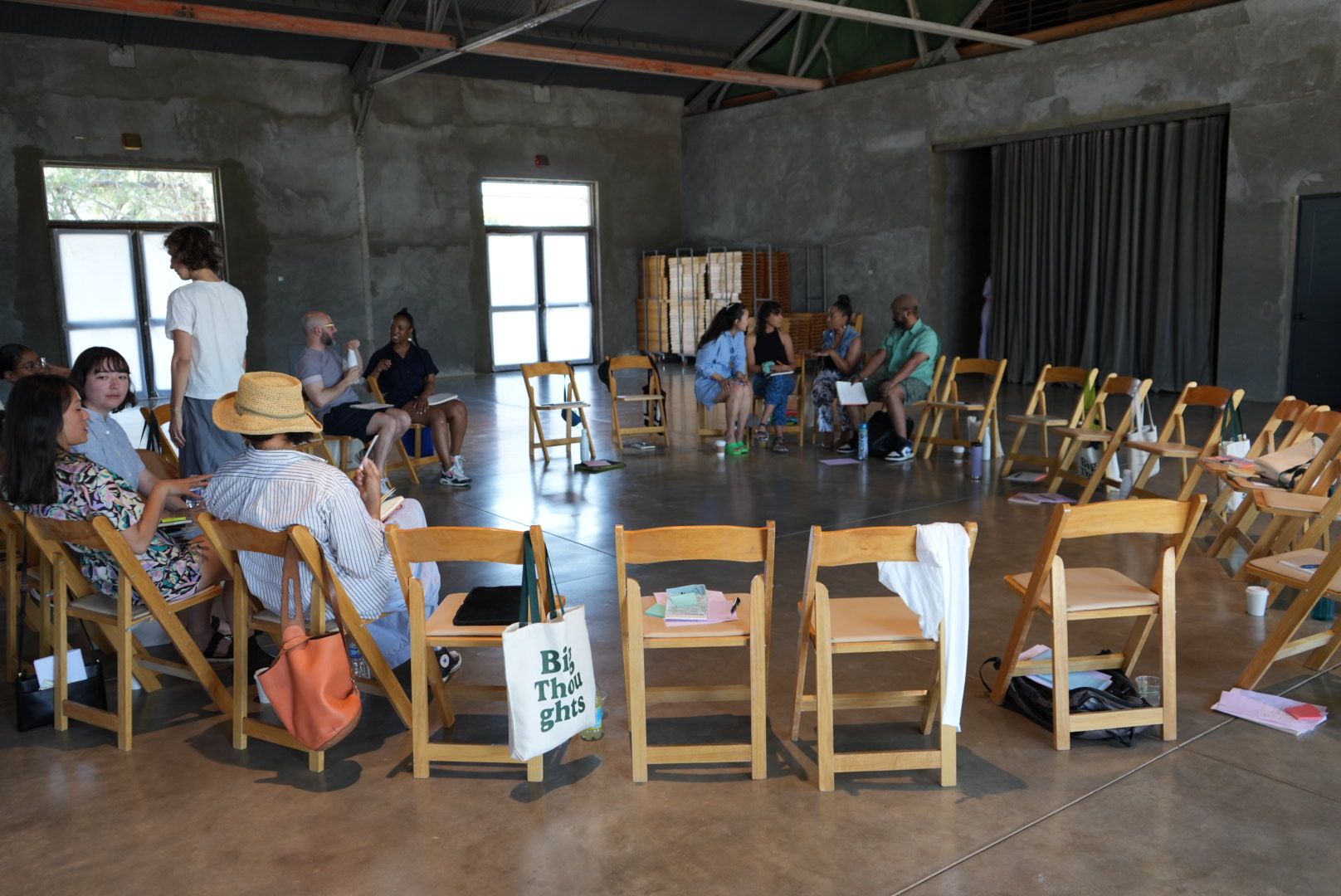
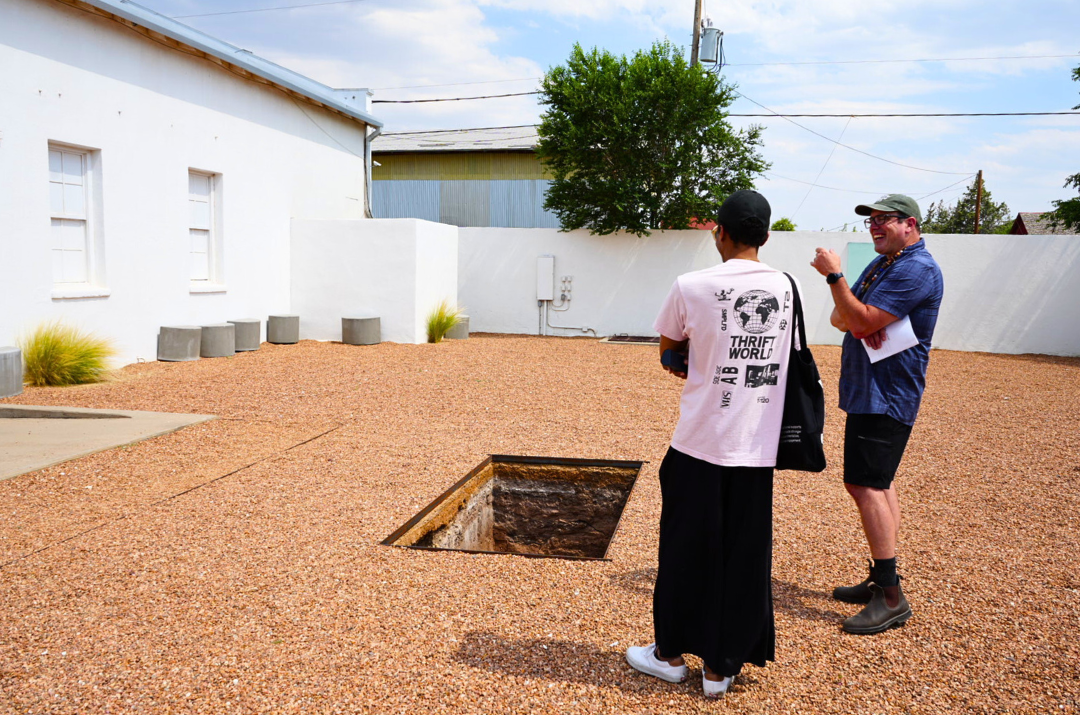
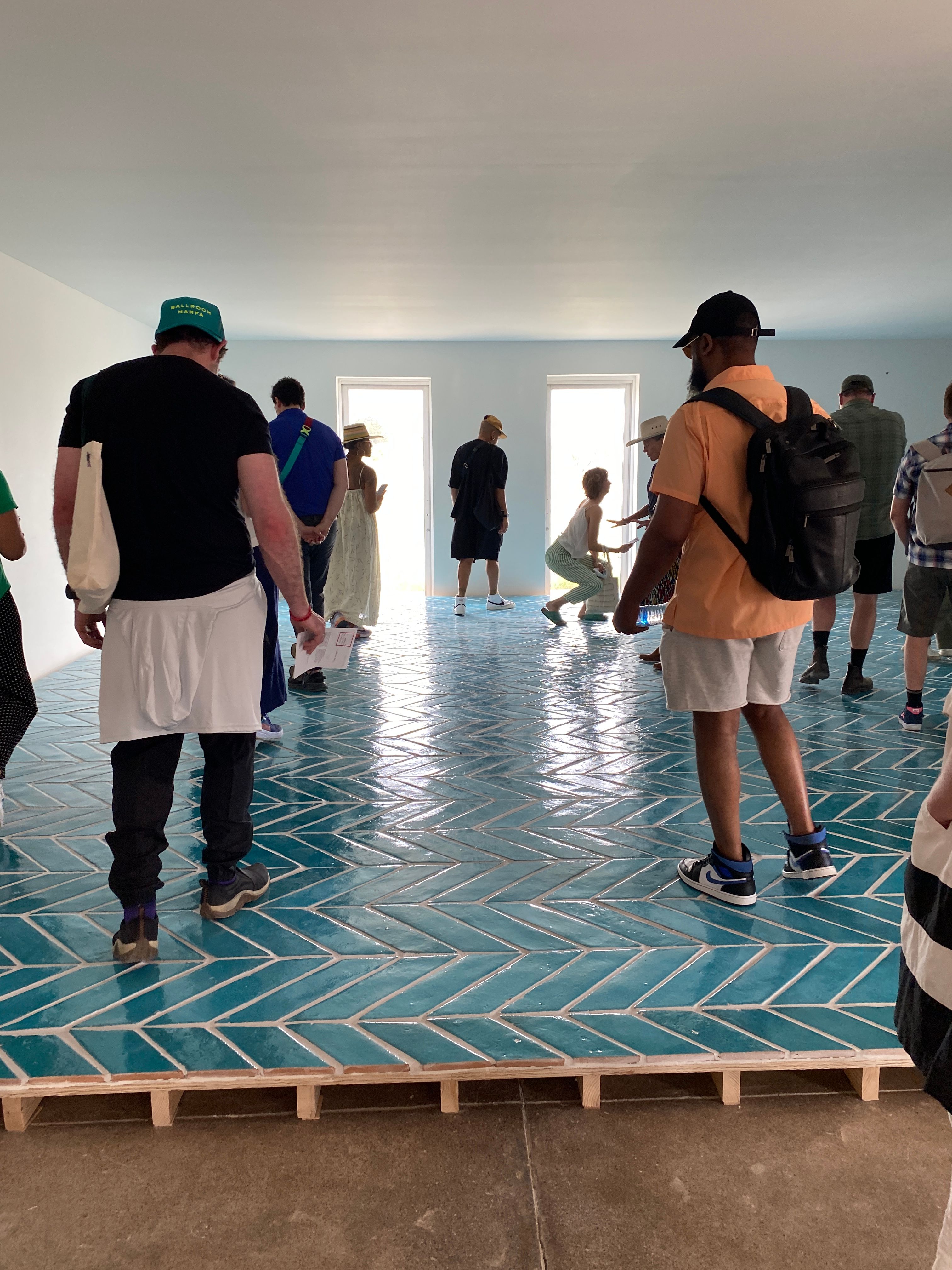
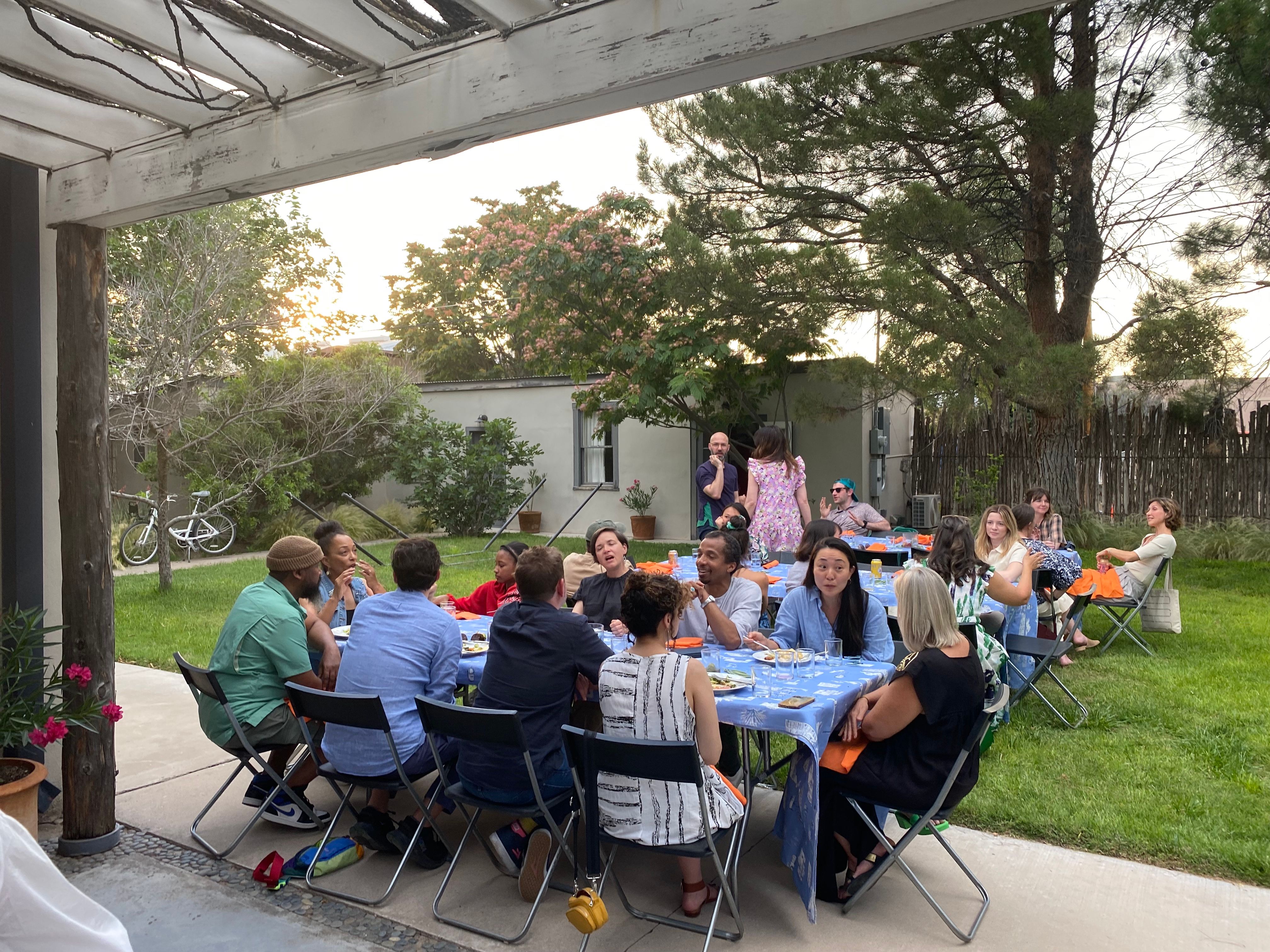
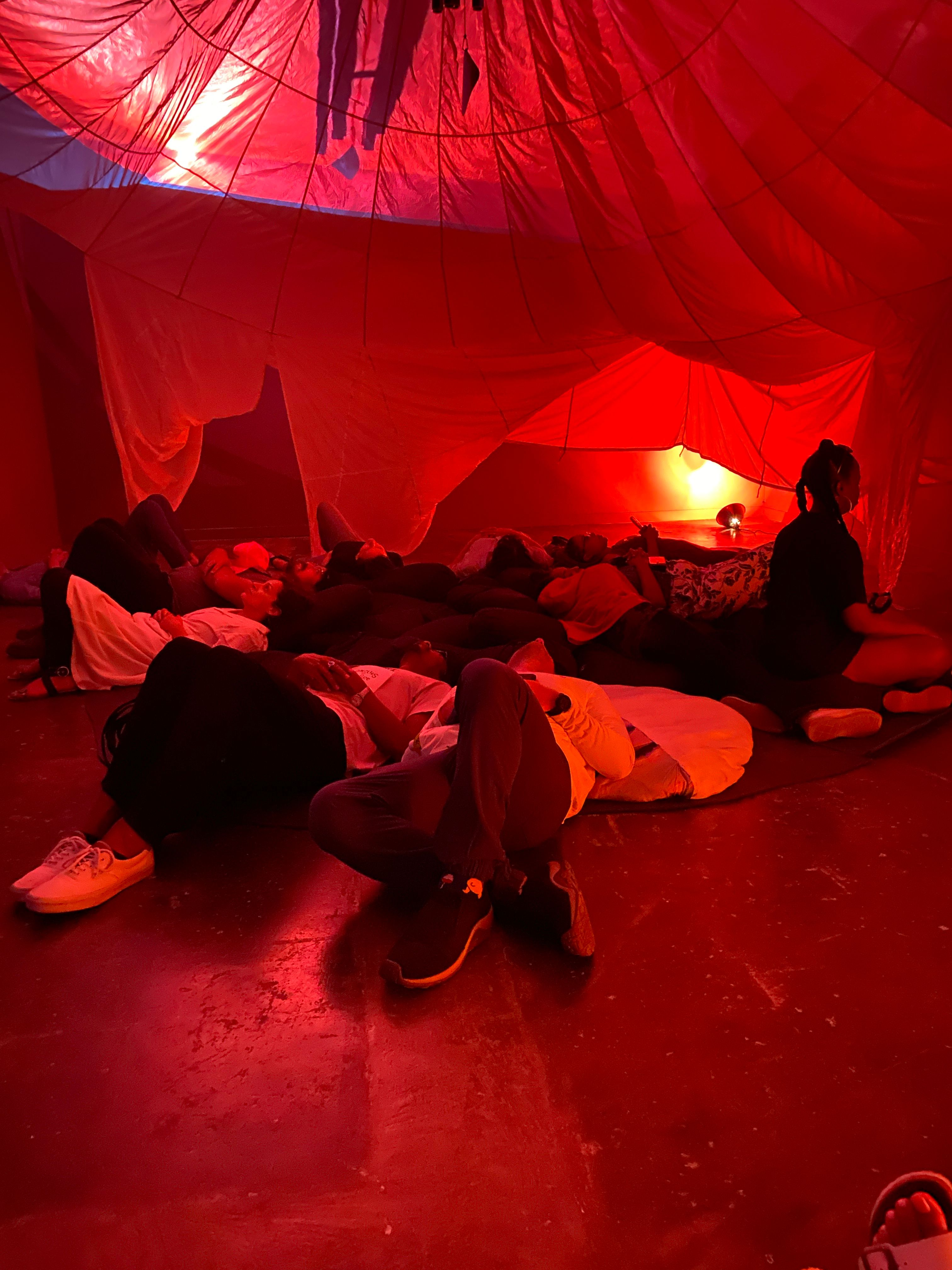
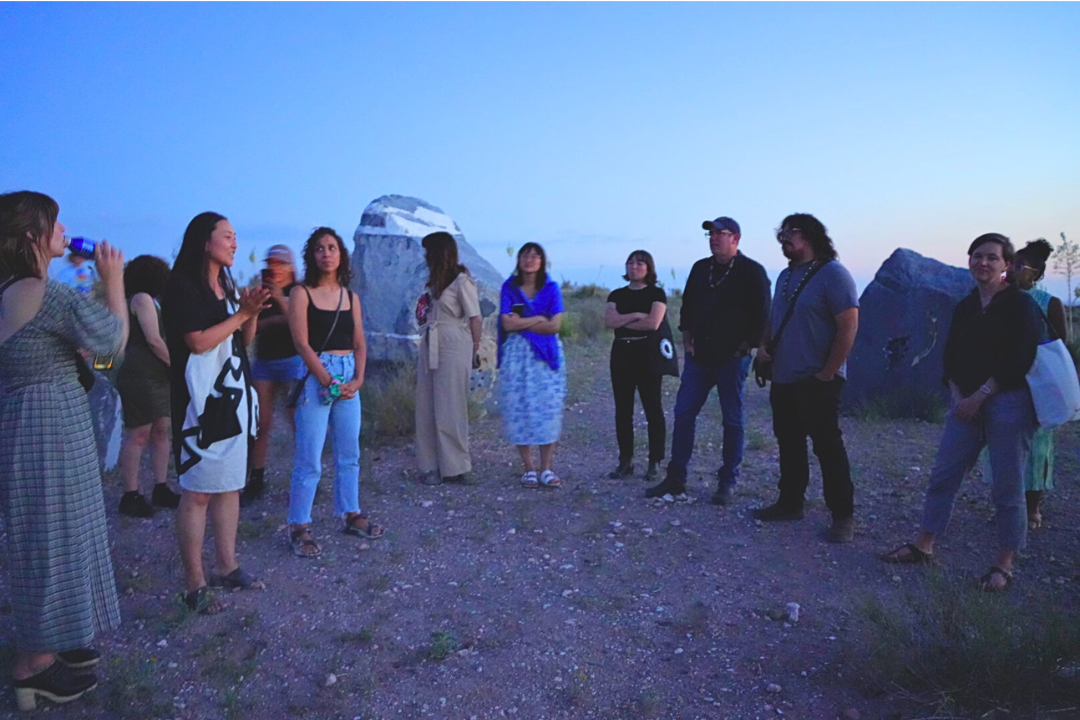
This past June, we gathered the Thought Leaders for our first retreat in Marfa, Texas, home of cohort member Ballroom Marfa.
– Donald Judd (1968)
– Donald Judd (1975)
I planned to visit Marfa, TX for years. But with jobs and kids and unrelenting calendars, the trip was repeatedly deferred—particularly after travel time was accounted for. It doesn’t much matter whether you depart from the west coast, east coast, gulf coast, or points further afield—it takes a day (and maybe then some) and deliberate planning to get to Marfa, TX. For many of us on this visit, it took the invitation by the Ruth Foundation for the Arts to gather us in Marfa for the first time.

The artist Donald Judd “chose the town of Marfa (pop. 2,466)” because “[he] wanted to be in the Southwest of the United States and be near Mexico and also to have room for large permanent installation of [his] work as well as room to install work by other artists.” He first visited in 1972 and by 1974 he had purchased the better part of a city block of buildings, designed as wartime airplane hangars and began to convert them into “permanently maintained public installations of contemporary art.” Permanence is one of those words that has taken on an air of obsolescence in this century. The work and cost to maintain these hangars and old barracks-turned-contemporary art spaces are useful reminders that it is not only centers that do not hold. Remote locations are still subject to degradation—by the power of the sun, imperialist policies, neglect. But the idea of Marfa has staying power—in part because of its distance from the nearest commercial airport—and because for many of us, we know it more from books than from first-hand experiences.
In his extensive writings, Judd describes his art as “specific objects,“ defined as “environmental” and “intrinsically more powerful” because of their relationship to “real space.” Having learned from and evolved so much of my practice from the environmental imaginations of artists of the 1960s and 1970s, I have an instinct to extrapolate these phrases, to recontextualize Judd’s specific language to figure outside of a narrow formalism, an art historical polemic, a history of land and conquest. I want to read “real space” not as saleable desert property—all site lines and light—but as inhabitable space, socially constructed again and again. But in Marfa, I found Judd’s “15 Untitled Works” in concrete obdurate and nearly impossible to move.
Concrete blocks, concrete poetry—I first came to art of the 1960s for the words. There were so many of them. They had the shape and heft of objecthood; they established the literal field of the page—inside and outside of the margin and the gutter—that relationship to “real space” that Judd heralded. But their power was always in their capacity for arrangement, which is to say, re-arrangement. They could mean something else, be taken up by another for a competing purpose. The same words could be used to communicate the opposite position. They could also be disappeared, erased, redacted—lost.
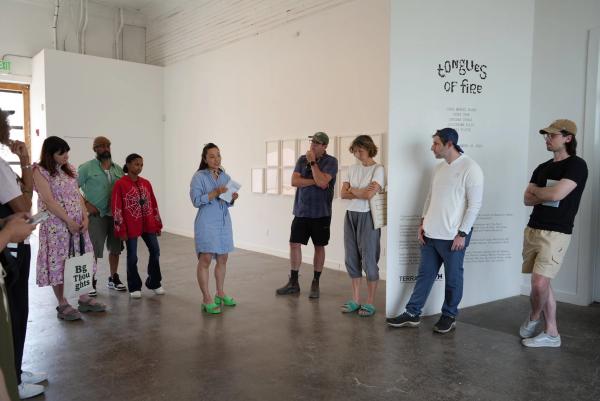
In Marfa we visited an exhibition, organized by our colleague and cohort member Daisy Nam and the sensitive team of Ballroom Marfa. Including works by artists Jorge Méndez Blake, Jesse Chun, Adriana Corral, JJJJJerome Ellis, and Nakai Flotte, Tongues of Fire takes its name from an essay by Chicana poet and theorist Gloria Anzaldúa and foregrounds “unconsidered, exiguous, and uncommon languages…that must be uttered to stay alive.” JJJJJerome Ellis’s suite of works are scores from the artists’ 2021 album, The Clearing. With this work, Ellis locates his own experience with disfluency (Ellis’ preferred terminology for stammering) in a history of regulated time that includes slave-holders’ tools of control—clocks and watches that enslaved people could not own or use. Ellis’s are vector-rich fields; they map relationships—affinities and tensions. They map “real space” and make both deferment and displacement visible.
They render the sublimity of silence as space that only reads as empty if the reader fails to take into account the intensity of activity (in the form of vibration, of knowledge, of feeling) that occurs between moments of time, places on a map, people.





In Marfa we gathered as a community of organizational leaders of smaller cultural non-profits from across the United States. Some people I knew, and others I met for the first time. And the time together took on something of the richness of the empty space Ellis holds in his works. It was intentionally un-filled by the Ruth Arts team. It did not honor the structures of our habituated temporal conditions. It was, as they say, out of place and out of time. And writing about it has been difficult—in part—because I am already on the outside of it. But also because there are private languages—which are not the same as secrets. They are shaped by shared experience and legible only to those who hold them. And in Marfa, I discovered a band of leaders with whom I share a language. And this language plays an important part in our building of organizations that are sustainable—which is not the same as permanent. Of the many things we could see from our position in Marfa is that the forms of our organizations will and must change—again and again—and always with sensitivity to the environment and to society.
Because wherever we go, we are not only inside of society, we are shaping it…from all the way out here.

Andrea Andersson serves as founding director and curator of Rivers Institute for Contemporary Art & Thought, a cultural organ for artists of the global diaspora based in New Orleans. Working with artists at the borders of art and archives, figure and ground, text and textile, she commits to a study of the indefinite field of art writing. Together with Siglio Press, she has co-edited a series of artists’ books since 2016. In recent years, she has edited publications and organized exhibitions with artists including Yto Baradda, Sanford Biggers, Helen Cammock, Troy Montes Michie, Cecilia Vicuña, Tina Girouard and Alia Farid.